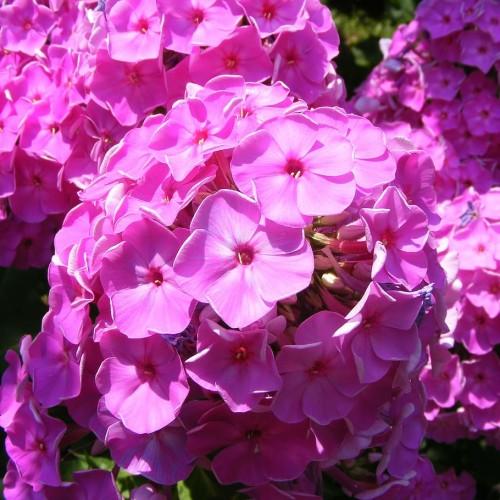
garden phlox
Phlox paniculata 'David's Lavender'
Also Known As - border phlox,common phlox,common phloxCycle:
Herbaceous Perennial
Watering:
Average
Hardiness Zone:
4 - 8
Flowers:
Flowers In Summer
Sun:
Full sun, Part sun/part shade
Soil:
Rocky , gravelly , dry, Well-drained
Fruits:
Fruits In Autumn Ready In
Leaf:
Yes
Growth Rate:
High
Maintenance:
Moderate
Care Level:
Medium
watering
Garden phlox (Phlox paniculata 'David's Lavender') will need to be watered deeply once or twice a week. Remember to water the root ball and not the leaves, and check the soil first with your finger to make sure it is still dry before watering. If the soil is already moist, it is best to wait before watering again. Additionally, it helps to water in the morning so that the foliage can dry out during the day, and reduce the spread of disease. If it is a particularly hot and dry spell, then you will need to water more regularly.
sunlight
Garden phlox (Phlox paniculata 'David's Lavender') requires full to partial sun in order to achieve good growth and blooming. It is best to provide at least 6 hours of sunlight per day, but no more than 8 hours. If the plant is in a shady area for the majority of the day, it may struggle to bloom and grow too tall and lanky. Placing the plant in a more sunny spot will help encourage better growth and blooming.
pruning
Garden phlox is an herbaceous perennial with attractive, fragrant flowers that makes it a popular garden plant. Pruning is an essential part of garden phlox maintenance. Since garden phlox can be an aggressive grower and spreader, pruning is also necessary for managing its size. The best time to prune garden phlox is in late winter or early spring, once the danger of frost has passed, but before buds have begun to swell or show color. Pruning should be done with a sharp pair of garden clippers or shears. Begin by removing any dead or damaged stems and foliage. Then prune the entire plant back by 1-third to 1-half its total height. This helps to encourage strong, new, vigorous growth. Additionally, it may be necessary to thin out the middle of the plant a little to keep it from becoming too dense. Deadhead faded flowers and foliage as needed to keep the plant looking neat and tidy. In general, pruning garden phlox helps to renew existing plants and can prevent or slow the spread of the plant. By pruning on a regular basis, gardeners can look forward to beautiful blooms each summer.
